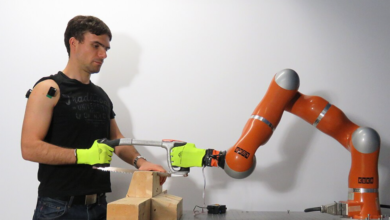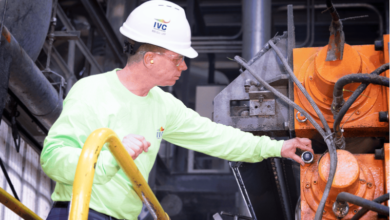What Are Suction Cups Used For? Exploring Their Role in Industrial Automation

When asking “what are suction cups used for?” Many people think of simple household applications, but their role in industrial automation is far more significant. Suction cups are essential components in robotic systems, enabling precise gripping, lifting, and transferring of materials from delicate electronic parts to large glass sheets.
Their vacuum-based technology provides a clean, reliable, and efficient method of material handling, reducing damage and improving workflow speed. In this article, we’ll explore how suction cups power modern automation systems and why they’re indispensable in today’s manufacturing industries.
How Suction Cups Work
Vacuum suction cups stick to surfaces by using air pressure. When you press a suction cup against a smooth surface, it pushes most of the air out from under the cup. This creates a low-pressure area (partial vacuum) inside. The higher air pressure outside the cup then pushes it firmly against the surface, holding it in place.
This works because of Boyle’s Law, which says that if the volume of a gas decreases, its pressure decreases too (if the temperature stays the same). In suction cups, pressing the cup reduces the air volume inside, lowers the pressure, and allows atmospheric pressure to hold it tightly.
Holding Force
The strength of a suction cup depends on the pressure difference and the area of contact:
F=ΔP×A
- F = holding force.
- ΔP = difference between atmospheric pressure and the pressure inside the cup.
- A = area of the suction cup touching the surface.
For example, a 5 cm suction cup with an ideal vacuum can hold roughly 196 newtons, about the weight of 20 kg. In real-life use, the force is slightly less due to air leaks.
Material and Surface Effects
- Materials: Flexible materials like rubber or silicone work best because they conform to tiny surface irregularities, keeping the vacuum intact.
- Surfaces: Smooth, non-porous surfaces (glass, polished metal) provide the best seal. Rough, porous, or dirty surfaces allow air in, weakening suction.
Limitations
- Suction cups don’t work in a vacuum because there’s no outside air pressure.
- Dirty, wet, or uneven surfaces reduce suction.
Extreme temperatures can make the cup material less flexible, lowering performance
Vacuum suction cups work by creating a pressure difference between the inside of the cup and the surrounding air. Choosing the right material and using it on smooth, clean surfaces ensures strong, safe, and reliable performance.
Role of Suction Cups in Industrial Automation
Suction cups are essential in modern industrial automation, acting as the link between machines (robots, conveyors, end-effectors) and the materials they handle. They make processes faster, safer, and more flexible.
Key Roles & Benefits
- Precise Pick-and-Place: Robots use suction cups to lift and move parts quickly and accurately in packaging, electronics, and assembly lines.
- Gentle Handling: Vacuum grip avoids scratches or deformation, making it ideal for fragile surfaces like glass, plastic, or finished metals.
- Versatility: Different shapes (flat, bellows, oval) and materials (silicone, NBR, polyurethane) allow handling of smooth, slightly uneven, or textured surfaces.
- High Efficiency: Speeds up operations, reduces downtime, and often outperforms mechanical grippers in consistency and maintenance cost.
- Smart Integration: Modern systems use sensors to monitor vacuum levels and seal integrity, supporting error detection and productivity improvements.
See also: Clinical Decision Support AI Agents: Seamless Integration with Epic, Cerner, and Meditech
How They Work in Automation Systems
- End-of-Arm Tooling (EOAT): Suction cups attach to robot arms or pick-and-place heads.
- Vacuum Systems: Pumps create negative pressure, which suction cups convert into gripping force.
- Control & Feedback: Integrated with controllers, sensors can detect grip success or part presence.
- Material & Surface Matching: Suction cups must fit the surface type, weight, and environment for optimal performance.
Why Suction Cups Are Valuable in Automation
- Reduce mechanical complexity compared to clamps or fingers.
- Minimize damage to sensitive surfaces.
- Enable fast attach/release actions for high-speed tasks.
- Offer flexibility to handle different shapes and materials with the same robot setup.
- Integrate into smart manufacturing lines with sensors for reliable, automated production.
Common Industrial Applications
Suction cups are essential tools in various industries for safely lifting, moving, and holding materials without causing damage. Key applications include:
Sheet-Metal & Panel Handling: Used in automotive and aerospace manufacturing to lift and position thin or curved metal sheets, reducing scratches and supporting automation.
Glass & Large Panels: Ideal for lifting and moving smooth surfaces such as glass, acrylic, or composite panels. Commonly used to safely handle large, fragile panels in construction, furniture, and façades.
Pick-and-Place / Packaging & Electronics: Speeds up automated lines by picking and placing items, including delicate electronics, cartons, or bottles.
Woodworking & Furniture Manufacturing: Used to lift, position, and move wooden boards, MDF panels, and furniture components with precision. They protect surfaces from scratches or marks and help improve workflow efficiency on production lines.
Food & Pharmaceutical Handling: Food-grade or hygienic suction cups safely move products while maintaining cleanliness and preventing contamination.
Suction cups provide fast, flexible, and non-destructive material handling, making them vital for industrial automation and production efficiency.
Advantages of Using Suction Cups in Automation
Gentle on Delicate Items: They use a vacuum instead of clamping, so glass, electronics, or finished metal sheets can be handled without scratches, dents, or deformation.
Faster Operations & Higher Throughput: Quick pick-up and release allow automated lines to run faster and more efficiently than many mechanical grippers.
Versatile Across Materials & Surfaces: Different cup shapes (flat, bellows, oval) and materials (rubber, silicone, PU) let suction cups handle glass, plastic, metal, wood, and even some curved or uneven surfaces.
Lower Wear & Maintenance: Less mechanical contact means fewer moving parts, reduced component wear, and lower maintenance compared to clamps or jaws.
Improved Safety & Reliability: Automating handling reduces manual labor, lowers injury risk, and ensures consistent operation.
Scalable & Modular: Suction cups can be combined into arrays and integrated into robotic arms, conveyor systems, or pick-and-place setups, adaptable to different sizes and weights.
Where These Advantages Matter Most
- High-volume manufacturing, like packaging or electronics.
- Handling fragile or finished surfaces such as glass, metal sheets, or displays.
- Flexible production lines where one system handles multiple shapes and materials.
- Situations where mechanical gripping could damage parts.
Considerations
- Works best on smooth, non-porous, and clean surfaces; rough, dirty, or porous surfaces reduce effectiveness.
- Correct cup sizing, vacuum system design, and regular maintenance are essential.
- Very heavy or irregular loads may still require mechanical or hybrid gripping solutions.
How to Choose the Right Vacuum Suction Cup
- Material Compatibility
Match the suction cup to the surface type. Smooth, non-porous surfaces like glass or metal work well with standard cups. Porous surfaces like wood or cardboard may need high-flow vacuum systems. Ensure surfaces are clean, dry, and free of oil or debris for a strong seal.
- Load Weight and Size
Choose a cup that can safely hold the object’s weight and fit its size. For heavy or large objects, use bigger cups or several cups to spread the weight evenly and keep the object stable.
- Working Environment
Consider temperature, humidity, and chemical exposure. Use heat-resistant cups for high temperatures and chemical-resistant materials for corrosive environments.
- Best Practices & Expert Advice
Regularly clean cups and surfaces to maintain adhesion.
- Avoid using cups on wet or oily surfaces.
Consult manufacturers or experts for specialized applications to choose the right cup type and maintenance routine.
Choose suction cups suited to the surface, load, and conditions for safe handling.




